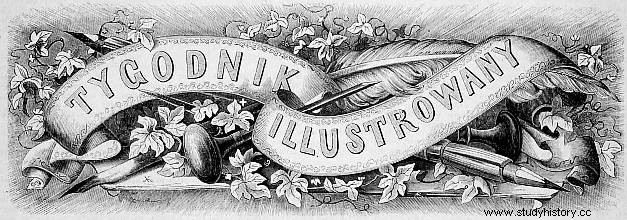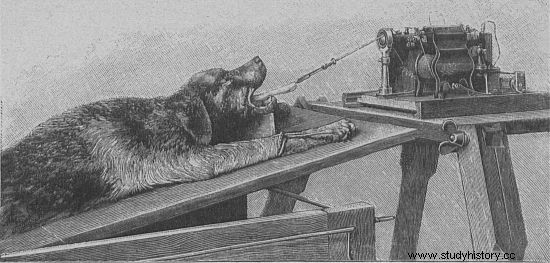Since ancient times, man has wanted to acquire knowledge that would allow him to revive the dead. With time, people began to abandon faith in the operation of magic potions, and to put more and more trust in science. What were the results of the "scientific" inquiries of 19th century researchers?
One of the sources of information about the latest discoveries and inventions in the nineteenth century was, of course, the press. Varsovians could learn about the results of the work of domestic and foreign scientists, for example, from the "Tygodnik Ilustrowany". Today, the reports published in it may laugh because of their absurdity, but a hundred years ago they were approached with full seriousness and with a thrill of emotion!
Pulling the tongue… or resuscitation
The nineteenth century became famous for revolutionary discoveries not only in the field of technology, but also in medicine. Everything was done with the old-fashioned trial and error method. The rapid development of science and technology made people ask themselves more and more difficult questions. For example:can the dead be resurrected? If so, how?

The Illustrated weekly informed its readers about the revolutionary advances in resurrection research ...
In Tygodnik Ilustrowany we find a summary of the investigations of two French scientists:Dr. Laborde and his assistant, Mr. Monche, who jointly attempted to solve this problem. They were inspired to do so by (allegedly) documented cases of reviving people already presumed dead!
An example would be the story of a 16-year-old who was under water for about ten minutes. After the boy was pulled out, he was using an unusual method of saving his life, which consisted of ... rhythmically stretching out the tongue (yes, language!). After three hours of systematic "resuscitation", the would-be drowned man was supposed to give the first signs of life!
Dr. Laborde in his Paris laboratory decided to check the credibility of the information he received. He conducted an experiment on a dog that was artificially (although it is not known exactly how) was killed.
For a long time, at the doctor's orders, the animal's tongue was systematically pulled out, but it did not bring the desired results. The scientists finally stopped trying, but a cleaner who liked the dog decided to "revive" him. This is how the animal (supposedly) came to life!
The ability to systematically extract the language - as the French scientist stated - must be trained. As a rule, when an accident happened, there was no person who had the appropriate skills and was tough enough to carry out this process for many hours. Therefore, Dr. Laborde began to consider an instrument that would perform movements automatically. He hired Mr. Monche to this endeavor, with whom he conducted the previously described dog experiment.
Machine for reviving
Together, they created a device that replaces the human hand. The machine made the necessary movements to revive it automatically:at regular intervals, 120 strokes per minute. The first version uses the mechanism on which the clocks work. Its disadvantage was the need to wind it up every five minutes. It was extremely troublesome with many hours of escape. To improve it, an electric motor powered by two batteries was used. Thanks to this solution, "pulling" could be carried out for three hours without touching the machine!

A device for restoring life during operation (On Artificial Revival, "Tygodnik Illustrowany", 1900, No. 38).
And now a bit of engineering ... In the first picture (click to enlarge) there are three figures - 1, 2, 3 - showing the construction of the electric »puller«. On the first of them, the letter A denotes the motor, B - the transmitter, and C - the resistance roller, which regulates the flow of electric current. The letters D and E mark the batteries (Figure No. 2). The third figure shows a clock mechanism (I, H) with a cylindrical motor (F). The second picture shows the instrument in operation.
Of course, it is easy to guess what the effectiveness of this sophisticated invention was. We can only be glad that the experimental stage is over and we know that pulling the tongue out is not enough to bring back life ...
Source:
About artificial revival , "Tygodnik Illustrowany", 1900, No. 38.
